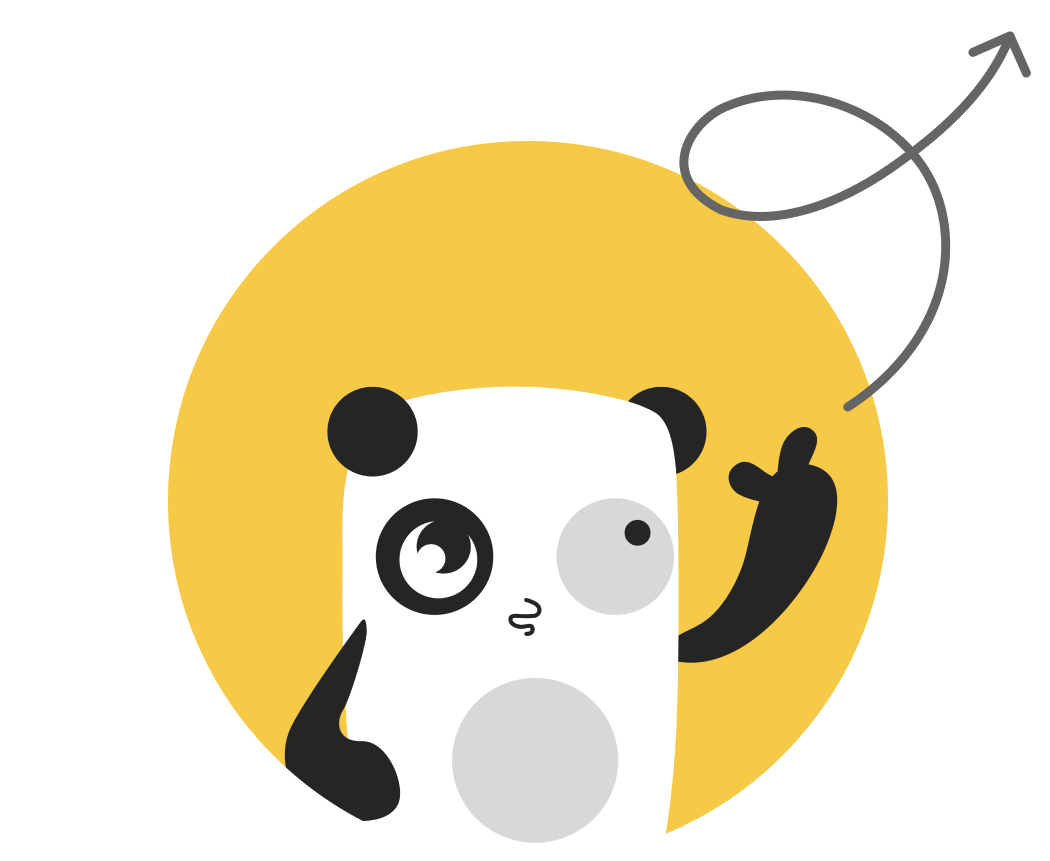
What is ‘Coco Chanel’? The ‘New Substance’ Linked To Slayings Of Colombian Musicians In Mexico
When rising Colombian singer Bayron ‘B-King’ Sánchez Salazar went missing in Mexico City in mid-September, it marked a dark turn on what was supposed to be a breakout leg of his musical journey.
Sánchez arrived in the city less than a week earlier to play his first international show, on September 14, where he was joined on the bill by his friend Jorge Luis ‘Regio Clown’ Herrera Lemos, a Colombian DJ based in the Mexican capital.
- Colombian musicians B-King and DJ Regio Clown were murdered in Mexico in a case linked to the drug trade and extortion involving the criminal group Unión Tepito.
- A new drug called Coco Chanel, a flavored variety of tusi, surfaced in Medellín and was consumed at the musicians’ event Sin Censura.
- Authorities arrested 16 suspects, including “El Comandante,” who allegedly organized the killings.
- "Coco Chanel" is a coconut-scented tusi brand with dangerous substance additions.
- Experts warn tusi cocktails are increasingly risky, with higher benzodiazepine contamination raising fatal intoxication risks when mixed with alcohol.
Two days after the show, both Sánchez and Herrera vanished after visiting a gym in the upmarket Polanco neighborhood.
The grim murders of two Colombian musicians in Mexico have brought to light a new drug on the market
Image credits: AndreaQuinteroOlivas/Adobe Stock
The following day, on September 17, two bodies were found with signs of violence on a roadside 30 miles away in Cocotitlán, a municipality on the southeast border of the capital, located within the State of Mexico.
Five days later, on September 22, authorities confirmed the two bodies were those of Sánchez and Herrera. A note found with them suggested the involvement of notorious criminal group La Familia Michoacana, but details emerged over the following weeks to point to another group.
🚨 ACTUALIZACIÓN | Caso músicos colombianos@FiscaliaEdomex confirma 16 detenidos, entre ellas “El Comandante”, presunto autor intelectual del homicidio de B-King y DJ Regio Clown.
El móvil estaría ligado a narcotráfico y extorsión tipo “gota a gota”.https://t.co/d5tqh440Wmpic.twitter.com/CwuhZUGUtC
— Apocaliptic (@apocalipticmx) October 31, 2025
The pair were known to have gotten into a gray Mercedes in the southeastern Iztapalapa neighborhood of Mexico City. In text message conversations between Herrera and his partner, apparently sent during the taxi ride to Iztapalapa he shared with Sánchez after leaving a gym, the DJ said he had to attend a meeting with a person known as “El Comandante” (The Commander) and shared the contact of El Comandante’s bodyguard, “Mariano.”
CAYÓ el COMANDANTE; ORGANIZÓ el ASESINATO de
BJ-KING y DJ REGIO CLOWN
Es Cristopher Camacho, el tipo q se hacía pasar como “gente d gobierno”
Los colombianos iban a verlo para hacer negocios… y acabaron muertos.
Agentes de @FiscaliaEdomex ya lo detuvieron.El caso #C4ENALERTApic.twitter.com/HPa2d0g5RM
— Carlos Jiménez (@c4jimenez) October 30, 2025
‘From today. I’ll look after myself a lot… I don’t trust anyone,’ Regio Clown wrote to his partner
Image credits: c4jimenez
In a demonstration of his concern over the meeting, Herrera sent his live location to his partner, but it stopped transmitting after he arrived in Iztapalapa.
“From today. I’ll look after myself a lot… I don’t trust anyone,” he wrote.
Authorities subsequently discovered the gray Mercedes abandoned in a basement garage in Tepetlaoxtoc, State of Mexico, around 30 miles north of where the bodies were dumped. Inside, they found a drinking straw with DNA from Sánchez.
🚨 Detienen a Cristopher “N”, alias El Comandante, presunto autor intelectual del asesinato de los músicos colombianos B-King y DJ Regio Clown en el Estado de México. #FiscalíaEdomex#Edomex#SeguridadEdomexpic.twitter.com/txIlhE3wWx
— Paola Rojas (@PaolaRojas) October 31, 2025
Apparent links emerged between the entourages of the two musicians and the Mexico City-based criminal group Unión Tepito. It turned out that Mariano had been the driver for the two musicians on multiple occasions, including collecting Sánchez from the airport when he arrived on September 11. El Comandante had driven them to the Sin Censura event they performed at.
“BOMBEO, BOMBEO”
Es el último video de los colombianos Jorge Herrera y Byron Sánchez en @SmartFitMx Polanco
Subieron a un taxi de aplicación luego a un Mercedes y se fueron rumbo a @Edomex
Allá encontraron sus cuerpos con un narcomensaje.@FiscaliaEdomex y @FiscaliaCDMX indaga pic.twitter.com/5fWKbhNbzt— Carlos Jiménez (@c4jimenez) September 23, 2025
#Mexico | Los artistas Bayron Sánchez Salazar y Jorge Luis Herrera, conocidos como B-King y DJ Regio Clown, fueron hallados muertos en las afueras de la Ciudad de México, tras casi una semana de estar desaparecidos.
Los músicos habían sido vistos por última vez el 16 de… pic.twitter.com/MgRq4LmgWJ
— Política Stereo (@politicaestereo) September 23, 2025
In mid-October, press reports emerged about a “new drug” known as “Coco Chanel” being involved. The substance was reportedly produced in Medellín, where Sánchez was based, and exported to Mexico. It was said to be widely consumed during the Sin Censura event.
On October 30, the attorney general of the State of Mexico issued a statement announcing the capture of 16 people in connection with the case and providing a detailed account of the findings of their investigation.
El Comandante was among those arrested after the murders
🔴Así catearon y lograron la detención de “El Comandante”, implicado en el asesinato de BJ-King y DJ Regio Clown
👉Cristopher Camacho, quien se hacía pasar por “gente de gobierno”, fue detenido por autoridades del Estado de México (#EdoMex).
🔴Está acusado de organizar el… pic.twitter.com/n4ugWgxGLJ
— Josue Aguilar (@josuealeexis) October 31, 2025
Cristopher “N.,” alias “El Comandante,” was among those captured, and according to the statement, was believed to have lured the victims on the promise of doing business with a man known as “El Pantera.” But the latter had paid 200,000 Mexican pesos (around $11,000) for the pair to be killed.
The statement said the principal target of El Pantera was Herrera “because he had disclosed information about his identity and because he distributed drugs at the Sin Censura event without his authorization.”
“The drugs ‘Tusi’ and ‘Coco Channel’ (sic), of Colombian origin, would be sold at these events, generating greater profits than those sold in Mexico,” the statement said.
Cayó autor intelectual del crimen del cantante -King y DJ Regio Clown; es Cristopher, El Comandante. Suman 16 detenidos, 10 de Colombia, Venezuela, Cuba y España @FiscaliaEdomex@FiscaliaCDMX@GobiernoMX@GobCDMX@Edomex@FGRMexico@infopresidencia@ONUHumanRights@ColombiaEnMexpic.twitter.com/JCuYjTaEOh
— Noel Alvarado (@noelalvaradom) October 31, 2025
Is ‘Coco Chanel’ a new drug?
While Mexican authorities and the media have reported “Coco Chanel” to be a new drug distinct from the substance known as tusi, it is in fact just one of many varieties of tusi that are available to consumers.
“It’s a tusi that smells like coconut [‘coco’ in Spanish]. That’s all it is. That’s why they call it Coco Chanel,” said Julian Quintero, Executive Director at Corporación Acción Técnica Social, an organization dedicated to drug policy advocacy that oversees Échele Cabeza, a drug analysis service provided at major music events in multiple cities around Colombia.
“Tusis have different names and different brands depending on the criminal group that sells them … So, Coco Chanel is nothing more than a brand of tusi produced by a particular criminal group,” he said, adding that the inclusion of flavors has long been a trend in Colombian drug markets.
Image credits: Carolin Voelker/Getty Images (Not the actual photo)
Quintero said his organization was in the process of analyzing a sample of the coconut-flavored product, which would give them a clear picture of its composition.
Tusi varieties are generally based around a mixture of the anesthetic ketamine and the stimulant MDMA, although different stimulants may be used. Other common ingredients include caffeine, sweeteners, and food coloring.
While the variety known as Coco Chanel is white in color, tusi is commonly bright pink, earning it the nickname “pink cocaine” despite being unrelated to the coca-based product.
‘Pink cocaine’ is another popular drug at the moment
Image credits: DEA (.gov)
Tusi also bears no relation to the powerful psychedelic drug 2C-B, despite taking its name from it. Some reports suggest that when tusi first came onto the market in Colombia in the early 2010s, it contained 2C-B, but the products sold as tusi today generally do not.
Yet press reports and government statements related to the Sánchez and Herrera case have generally failed to make the distinction, often reporting tusi to be a common name for 2C-B.
“This is where the ignorance and misinformation that continues to come out from government agencies is serious because it shows that they do not understand illegal drug markets,” said Zara Snapp, director at Instituto RIA, a drug policy advocacy organization that oversees drug analysis service Checa Tu Sustancia throughout Mexico City.
“The authorities themselves don’t really know what these substances are, what their effects are, what the market demand is, what exists, what our relationship with other countries and these substances is, and so on and so forth,” she said.
Image credits: FG Trade Latin/Getty Images (Not the actual photo)
An increasingly risky and addictive cocktail
While it is unclear exactly what the drug cocktail sold as Coco Chanel contains, both Quintero and Snapp say samples of tusi analyzed over recent years have increasingly included powerful and addictive adulterants.
According to Quintero, in the past year, close to 30% of tusi samples processed by Échele Cabeza have included benzodiazepines, a family of powerful sedatives with a high potential for forming dependence. He pointed out that when you factor in the tendency for tusi use to be combined with alcohol consumption, having benzodiazepines in the mixture significantly increases associated risks.
“[When] benzodiazepines, which are depressants and hypnotics, are mixed with ketamine, which is a depressant and anesthetic, and mixed with alcohol, which is a nervous system depressant, the likelihood of fatal intoxication is very high,” he said.
According to a report delivered by Échele Cabeza at the 2025 Harm Reduction International Conference held in Bogotá in April, around 20% of tusi samples analyzed by the organization at the 2023 edition of music festival Estéreo Picnic contained benzodiazepines. At the 2024 edition, that figure leapt to 43%.
“That really should be news,” Quintero said.
According to Snapp, although benzodiazepines are found in some tusi samples in Mexico City, it is more common to find methamphetamine, a powerful and highly addictive stimulant.
“It is the cheapest substance to produce, we produce it here [in Mexico], and we have found it in MDMA, in tusi samples, in cocaine,” she said.
In some cases, opiates, including heroin, have been found in batches of tusi, although Quintero said the no more than 20 samples found by his organization annually don’t constitute a significant trend when compared to the prevalence of benzodiazepines.
He also highlighted the fact that producers are quick to capitalize on market trends—providing a stark warning about the dangers of trusting any particular brand.
“Since the press made Coco Chanel famous because of the case [of B-King and Regio Clown], everyone in Medellín is selling [their product] as if it were Coco Chanel,” he said.
Meaning, even if a drug called Coco Chanel is on sale in Mexico City today, there’s no guarantee it’s the same product allegedly tied to the deaths of Sánchez and Herrera.











15
0